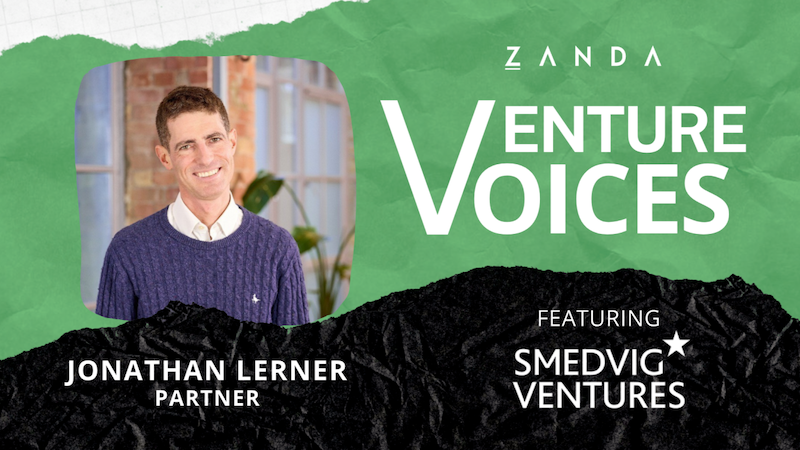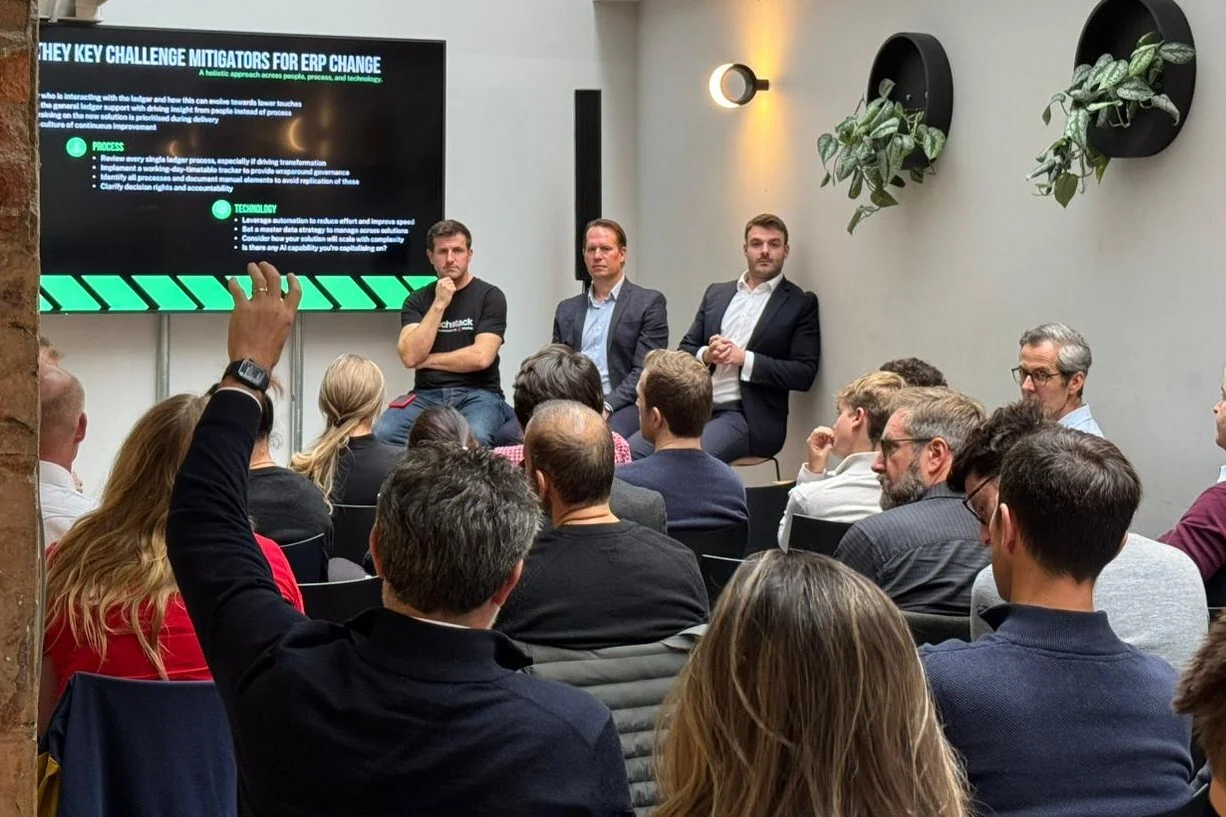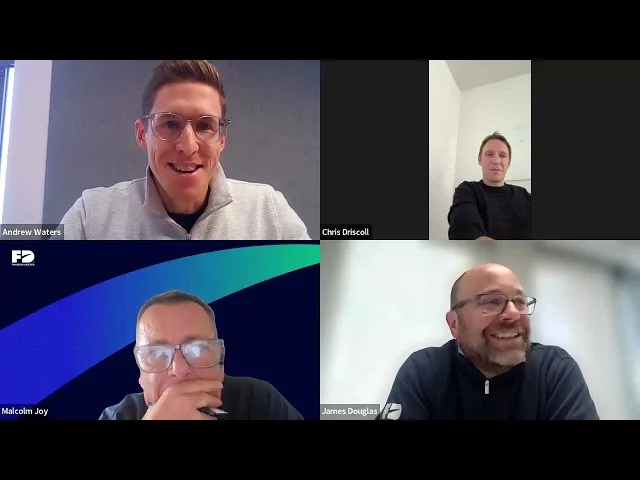In this episode of Venture Voices, we’re joined by Jonathan Lerner, Partner at Smedvig Ventures, a long-term venture capital investor backing fast-growing tech companies across Europe.
Jonathan shares his journey from engineering and consultancy to VC, and how Smedvig’s evergreen capital model helps founders go the distance. He reflects on the evolving SaaS landscape, why founders often underestimate finance, and the real signals of a CEO stepping into leadership. We also unpack the rise of AI-first businesses, when it’s time to hire a CFO, and why enjoying the journey is as important as hitting your ARR targets.
Don’t have time to read the entire discussion, watch the full discussion on our youtube channel or listen on spotify.
Can you share some insights about your journey to Smedvig?
I studied electrical and electronic engineering at Bristol before joining Bain & Company, where I spent five years consulting for large-cap companies across various sectors. During that time, it became clear that digital transformation was going to reshape industries, and I started to feel that consultants might struggle to keep pace. Venture capital felt like a much more interesting space to be in, investing in the businesses that were going to drive that change.
Were you considering Private Equity as well, or was your focus solely on Venture Capital? What attracted you to Smedvig?
Interestingly, I wasn’t looking at PE at all. I was really excited by novel technologies and young companies that were genuinely changing things. So I was very focused on VC, and I loved the blend of long-termism that a family backing could give, as well as being excited about backing novel businesses that Smedvig had.
And it’s fair to say that longevity of the investment means there’s potentially a closer bond with the founding team and maybe you’re slightly more supportive. What do you see, and what investment stages do you typically go on that journey with founders?
When I joined, we avoided using the term family office because it was often misunderstood. That perception has shifted. There are a lot of very high-quality family offices doing strong direct investing, and founders increasingly see that you can get the best of both worlds.

Would you say Smedvig blends traditional VC strategy with a more long-term approach?
Definitely. Every company we invest in, we back with the aim of helping it grow from early-stage revenue into something much larger. That is always Plan A. But we also know that Plan A does not always work out. When that becomes clear, we work closely with founders to co-create what Plan B or Plan C might look like, so they can stay resilient and keep building.
As we’ve all seen over the last 18-24 months, Plans B or C have had to come into play more frequently and these outcomes can still be positive. From your experience what alternative outcomes have you seen in the last few years that don’t follow the typical scaling approach?
There are many more possibilities now. Cash flow is still fundamental. As soon as a company brings its burn rate down to zero, it gains control of its own future. In SaaS, especially AI-enabled SaaS, it is difficult to reach breakeven below 10 million ARR, and nearly impossible under five. But once you reach 10 million ARR, profitability becomes realistic. At that point, companies can consider various routes.
The key is getting to that point where options are open, then you can decide. Are you exiting at that point? Are you looking to do a majority recap? Are you going to struggle to get there, and if so, how can you increase your strategic resonance with potential acquirers?
What are some of the hygiene factors you look for, from pitch deck to first call and then from first call to second?
From pitch deck to first call, it usually comes down to whether it's an intriguing idea at the right stage, in the sectors and geographies we want to cover. From first call to second call, it’s really about the founder. We look at traction and how quickly the business is growing, which acts as a proxy for product-market fit. We also assess the size of the opportunity.
When evaluating a founder or founding team, what stands out to you?
We’re happy to back both single founders and founding teams. There are pros and cons to each. When it’s a single founder or a founder CEO, we look closely at founder problem fit, why are they the right person to solve this particular problem. We also focus on energy, responsiveness, clarity of vision, and a demonstrated ability to articulate and execute a strategy. Sales is a big one too. ARR does not increase unless someone is selling the product.
How involved are founders typically in sales as the company grows?
Almost every business we back still has founder-led sales happening. Whether they come from a sales, product or tech background, founders are often the ones out there selling, especially in B2B. They hold the vision, can build relationships, and usually do not yet have a fully built senior team. How quickly they build that team depends on their own background. But this transition from founder to CEO is one of the most fascinating parts of the journey.
When does that transition typically happen?
We tend to see that shift between Series A and Series B. At Series A, things are still quite collaborative and informal. By Series B, when a business is maybe 50 to 60 people, you need structure, middle management, and the ability to manage through others. You need to hire brilliant people who can take the business forward.
Can you usually tell whether a founder can make that leap to CEO of a larger company?
We back people we believe can make that transition. Some have done big GM roles before, some are second time founders. But even if they’ve done something similar, this business might take a completely different route and it doesn’t always pan out but we would not issue a term sheet to someone if we did not think they had the potential to lead a 100 person business.

Where does Smedvig typically plug in to support founders?
It is different for every founder, but often, especially at Series A, there is no finance infrastructure at all. When we do financial due diligence, we are really just trying to assess what level of chaos we are stepping into. There is usually a finance hire to be made. Whether that is a financial controller, VP finance or an FD is a conversation we have together, but it is always a key hire. And then depending on where the founder’s strengths lie, we will often support with hiring a CRO, CPO or CTO, whatever is needed to build out a full C-suite ahead of Series B. If there are multiple founders, the dynamic looks different, but the need for functional leadership is the same.
A strong strategic founder, someone from an investment banking or consulting background, might be capable of doing both CEO and CFO roles. But just because you can does not mean it is a good idea. If you are constantly pulled into areas outside your expertise, it drains energy and distracts from the most important leadership work.
On average I think it is the most underestimated function. Founders instinctively know they need a head of sales if they want to grow revenue, and a head of product or tech to build. But finance is often overlooked. It is not just about making the numbers work. It is about structuring operations in a way that reduces friction and creating the information needed to make fast, accurate decisions. Without that, it is hard to know what is working, what is not, and how to allocate resources effectively to maximise growth.
Do you think the focus on ARR sometimes causes founders to undervalue finance?
Exactly. Founders often jump ahead and see ARR as the key success metric. They think if they make a great product and sell it well, the rest will follow. Everything else becomes secondary. That’s true to some extent, especially early on. But as companies grow, things like gross margin and sales efficiency matter more. Founders sometimes miss that sustainable growth comes from understanding what is working, fixing what is not, and doubling down where they see traction. To do that well, they need to understand the data within the business. With the tools available today and with the growth of AI, even early-stage companies have access to vast amounts of data that can be incredibly powerful if used properly.
It’s easy to see why a business with a strong moat or a great sales team might delay hiring a CFO. Founders often have ego, and they focus hard on growth. If they believe their sales engine is working, it is natural to spend on sales, marketing and product. But that can burn through runway before a finance person is even in place. When the CFO finally arrives, they often reveal the runway is not 12 months, it is six. That can paint the role of the CFO in a negative light but what they really bring is insight. They have access to all the data across sales, marketing, product and operations and can help make sense of it. They’re an expert at presenting an argument to the board on how the capital is allocated on different growth levers.
That’s absolutely right, but it isn’t just to the board. Their real value is internal.

So, in your opinion do you think RevOps and data should sit below the CFO?
Different businesses handle it in different ways. Sometimes RevOps sits under the CRO. Sometimes it sits in finance. I do not think it matters too much where it sits. What matters is that it exists and that there is a single version of the truth once the company reaches scale.
And as businesses grow, the types of data they need to track become more complex. Net retention, customer-level profitability, and lifetime value become crucial. Often no one in the business has done this before, and the founder might be trying to piece it together themselves. If they come from a finance background, they might be able to lead that analysis, but they will still need a strong financial controller or head of finance to ensure system controls and data quality are in place.
How do you help founders think about the right level of finance hire?
This is always a live conversation. Everything moves fast in a startup, so the right hire today might not be the right hire in twelve months. You need to think about where the business is going and design a structure that can grow with it. You want someone who can deliver current needs but also has the potential to scale. It is often a question of how you pair a senior strategic thinker with someone who can execute. Do you hire both now? One first, one later? There is no one answer, but it is always a constant debate.
What growth metrics do you look for at Series A and Series B?
At Series A, growth rate is key. We typically look for businesses growing at 150 percent+ year-on-year to get to the million ARR mark. That is the bottom threshold for us, though many are growing faster.
We also look at gross margin. Even if it is still early, we want to understand where it is now and where it could land. In SaaS, that often means aiming for 85 to 90 percent, though some AI costs can affect that.
Net retention is also critical. If you are below 100 percent, you end up with a leaky bucket. At one million ARR that is manageable, but at 20 million ARR, even a five percent churn becomes a major issue. On the other hand, 105 percent NRR gives you momentum.
Finally, CAC to LTV and payback period matter. Whether those are acceptable depends on churn. If you have long customer lifetimes, you can tolerate longer payback. If churn is high, you need to adjust.
And when you look to reinvest at Series B, what do you expect to see?
We think more about the market than the company itself. As we said, not every business stays on the same track. If the company is growing at less than 50 percent but has been capital efficient and spent little to get there, they can just about raise. That is the baseline. If they have not been capital efficient, they need to be growing at well over 50 percent. And if they want to attract top tier Series B funding, they usually need to be growing at 100 percent or more.
Does profitability start to become more important at that point?
Not necessarily. A business might still be investing heavily in product or scaling the sales team, which can mean a period of high burn before returns kick in. If the business can clearly explain why it is spending, and the logic holds, then the burn is fine. You just need to be able to show that the investment is driving growth.
This was the problem during 2020 and 2021. It was growth at any cost. That model does not work. At some point you are spending a dollar to get back 25 cents. Now the focus has shifted. There is a balance between growing fast and showing that you can build EBITDA over time. You invest ahead of the curve because there is a huge opportunity, but you also need to show where the profit will eventually come from.
It must be really rewarding to see that evolution in a company over time. Watching a CEO and leadership team grow in confidence and seeing things like board packs going out 72 hours before meetings, team members clearly owning areas of the business, clear priorities and accountability. That kind of maturity is a huge shift from where many businesses were 18 months earlier.
What are some of the signs that a leadership team and CEO are really working?
Hiring A-players is one of the clearest signs. At Series A, most teams are still building that capability. But when you see a CEO bringing in fantastic people who are objectively better than them in specific areas, and they are comfortable empowering those people, that is when real momentum starts to build. The founder stops trying to do everything. You see that evolution, the founder who was already impressive at Series A becomes a different kind of leader, stepping into the CEO role. It is a transition we talk about a lot. It is not easy. It is a completely different job.
And it is not unusual for people to struggle with that shift, is it?
Not at all. In fact, I do not think it should be seen as a failure. Building a business from zero to a million ARR, or a million in anything, is an incredible achievement. The value you create for your customers and your team is significant. Whether or not someone is the right person to scale it all the way is a separate question. But the act of founding and building something real is already a success in itself.

That said, not every founder is motivated by financial gain. Some just want to build something meaningful and impactful. The point is, the non-venture path is just as valid. Most businesses should not raise venture at all. That does not make them bad businesses or their founders any less successful.
We are seeing more businesses reach ten or fifteen million in bootstrapped revenue with 80 people and no outside capital. At that point, they might look at a partial private equity raise and a more traditional exit route.
The financial outcomes can be better than a venture-backed path, and they have had to be capital efficient the whole way. The challenge with a large seed or Series A round is that spending discipline can slip. You are encouraged to invest heavily in roles and infrastructure to grow fast, which is often the right thing to do, but it is hard to maintain that same level of rigour.
When you talk about hiring A-players, it sounds like it really lifts a weight off the founder’s shoulders.
Absolutely. If you do not hire A-players, you end up constantly worrying about what they are doing. You either step in and do their work, which disempowers them, or you leave them alone and things quietly break down over time. We have seen both happen. Founders sometimes hire people who are more comfortable being subservient, which can feel safer or less expensive, but it does not work. That decision to save £40,000 or £50,000 might make sense on paper, but it often backfires. You have to push for the best people, even when it feels hard.
I can often see the difference in a founder’s body language when meeting them for the first time. If a founder comes to us to replace a B or C player, they often have slumped shoulders and low energy. When they are hiring an A-player for the first time, there is a spring in their step. You can tell they are thinking about the future and working on the business, not stuck in it.
A-players let you step out of the job you were doing and free you up to lead. Some founders love that shift. Others find it hard to let go. But either way, you can see the change in how they carry themselves.
What are some red flags you see when someone is raising or just after you've invested?
Red flags are different from mistakes. For us, a major red flag is any lack of transparency. If someone hides that a contract is churning, or that a number in the deck was not quite accurate, that is a problem. We want to be the first person a founder calls when something goes wrong, not the last. We want to be supportive and collaborative in working out the next step.That does not mean we will not be critical or hold them to a high bar, but we want the relationship to be honest. That is where real value is created. Yes, there are documents and board roles and governance processes, but at the heart of it is a relationship. If it is going to last five or ten years, it should be an enjoyable one as well as a fruitful one. Founders should feel comfortable being honest.
What about common mistakes?
The most common one is hiring too slowly after the raise. In a B2B SaaS business, you need to build the team quickly to hit your plan. There is a cadence to hiring and scaling. If you raise Series A but delay hiring, your growth rate will drop, because you do not have the people in place to execute. You simply cannot grow at 150 percent without the infrastructure. Even great founders fall into this trap. They raise the round, but the hiring takes too long. Once they fix it, the growth can return, but the delay can be costly.
How has the first half of 2025 compared to last year, and if you had a crystal ball, what would the rest of the year or next year look like?
We have had a great first quarter. We are going to make more investments this quarter than we have probably ever made in a single quarter, which is fantastic. There are a lot of really strong businesses out there right now.

There are lots of AI-first businesses growing quickly and building impressive products, which is exciting from a venture perspective. But it also comes with risk. We have to ask ourselves, will the generic models catch up with them in two, three, or five years?
What we try to do is back businesses with something the generics cannot easily replicate. That might be a proprietary data moat, a depth of product that cannot be commoditised, or the flexibility to integrate with multiple models depending on the task. The world is moving quickly, which is good for portfolio growth, but it also heightens the risk profile.
Have you ever considered becoming a founder yourself?
I have. When I moved into venture, I thought that might be the direction I would eventually take. But over time you realise just how difficult it is to be a founder. I really enjoy working with lots of different companies and founders. Yes, there are times when you wish you could focus deeply on one problem, but being a founder is an incredibly tough and often lonely job.
Is there a piece of advice you find yourself giving to founders over and over again?
The thing I probably say the most is: you have to find a way to enjoy this. It can be all-consuming. And while that might sound like glib advice, it really matters. Reaching one million ARR is a huge achievement. But at that stage, a founder is likely thinking about all the things that are not going well, metrics, targets, the next raise, cash runway. To lead well, you have to find enjoyment in the process. That usually means focusing on the things you are best at and enjoy most. The two often align. As the business grows, you can start to build a team around you that lets you focus more on that. At one million ARR, you probably cannot do it yet. At ten or twenty million, you can. That is one of the real benefits of scale.
It is like going from solo rower to building a whole crew. You are still setting the direction, but now you are surrounded by specialists who can help you get there more efficiently.
Jonathan, thank you so much. It has been a pleasure as always.




